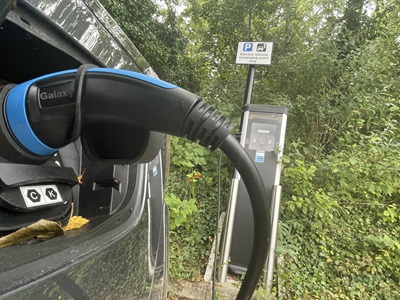Pollution status to be removed as nitrogen dioxide levels fall
17 Jul 2025

A West Suffolk village is set to see its status as an air pollution hotspot removed following a successful and sustained reduction in nitrogen dioxide levels.
But residents in Great Barton are being reassured by West Suffolk Council that it remains committed to monitoring for the pollutant along the stretch of the A143 and will take action if levels breach what is permitted by the Government.
The stretch of the A143 at Great Barton was declared an Air Quality Management Area back in 2017. The year after the council monitoring recorded an annual average mean of 48.5 micrograms of nitrogen dioxide per meter cubed of air (48.5 µg/m3), the highest it has reached there.
The Department for Environment, Food and Rural Affairs (DEFRA) has set a permitted level of 40 micrograms of nitrogen dioxide per meter cubed of air (40 µg/m3) recorded as an average mean over the course of a year. Anything above that requires the local district council – in this case West Suffolk Council - to take action to bring pollution levels back down.
An action plan led by West Suffolk Council to tackle the issue included relocating a pedestrian crossing to a less built-up area where air pollution could more naturally disperse as well as delivering improved electric vehicle recharging infrastructure in across West Suffolk.
It also included work with the Great Barton Primary School and Suffolk County Council, to raise awareness of the harm toxic fumes released by drivers leaving their engines running while parked. Pollution from idling vehicles can cause asthma in children, stunt their lung growth, and impact on their health for the rest of their lives.
These local actions have coincided with changes in car manufacturing and ownership of electric vehicles which do not produce any exhaust emissions.
And that in turn has seen nitrogen dioxide levels fall year on year with the figure for Great Barton recorded for 2024 down to 27.7 µg/m3.
Normally when monitoring has shown nitrogen dioxide levels are consistently below the national threshold for three years, Defra require an AQMA to be lifted. The Great Barton AQMA has stayed in place for longer as it was recognised that the data for 2020 and 2021 couldn’t be relied upon due to the pandemic which restricted movement and with it traffic and pollution. Monitoring since then, however, has confirmed not only that nitrogen dioxide levels at Great Barton remain consistently below the national threshold, but also that they are continuing to reduce.
West Suffolk has now written to residents in the AQMA and other statutory stakeholders to inform them of its intent to remove the status and to reassure them that it will continue to monitor nitrogen dioxide levels there.
The removal of the AQMA will mean it will no longer show as a polluted area on land searches such as when someone is buying or selling a property in the area.
Cllr Gerald Kelly, West Suffolk Council’s Cabinet Member for Governance, Regulatory and Environment, said: “This is great news for anyone who lives in or around the area. The relocation of the school crossing, efforts to try to encourage drivers when parked or stuck still in traffic to switch off their engines, improvements to electric vehicle infrastructure including by the council, and advances in car manufacturing, have all seen levels of nitrogen dioxide reduce to amounts deemed safe by Defra.
“That said I want to reassure residents that even after the AQMA has been removed we will continue to monitor air pollution at Great Barton and across West Suffolk for the benefit and health of our residents.”
To find out more about the council’s work monitoring and tackling air pollution visit our Air quality webpage and for more on electric vehicles and chargers visit our Electric vehicles (EV) webpage.
Posted in categories: press release, news, environmental-news
